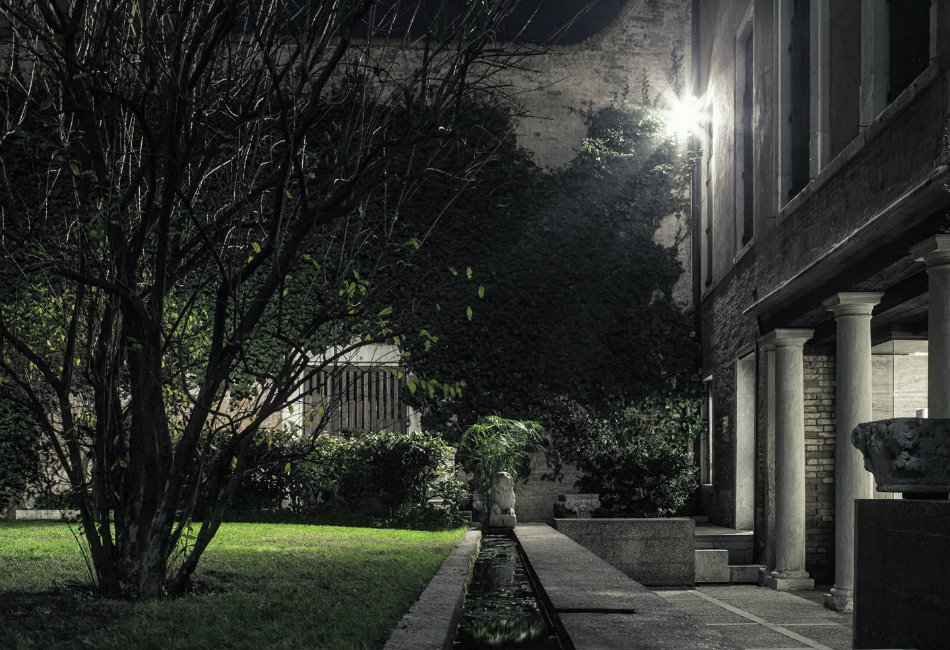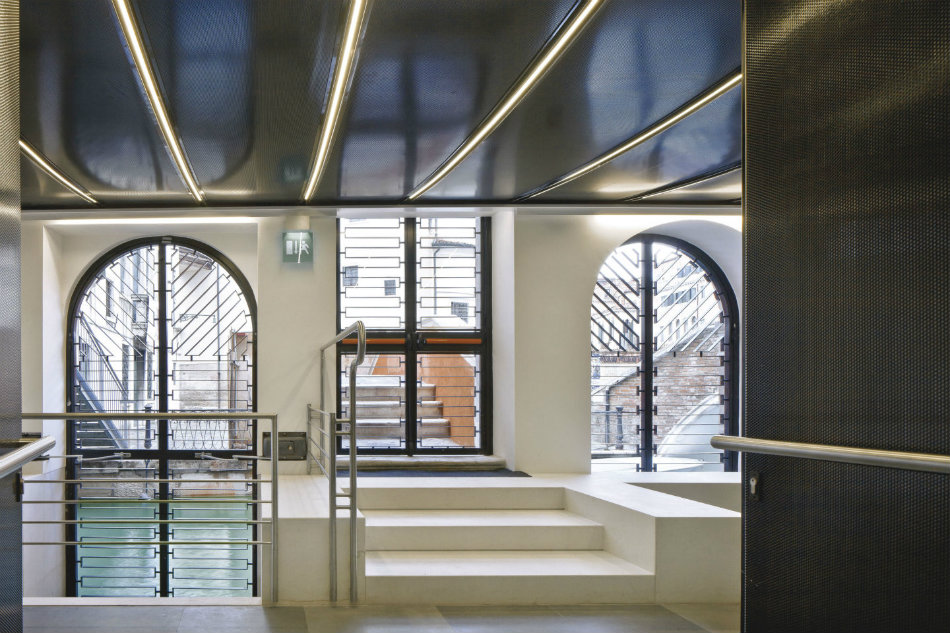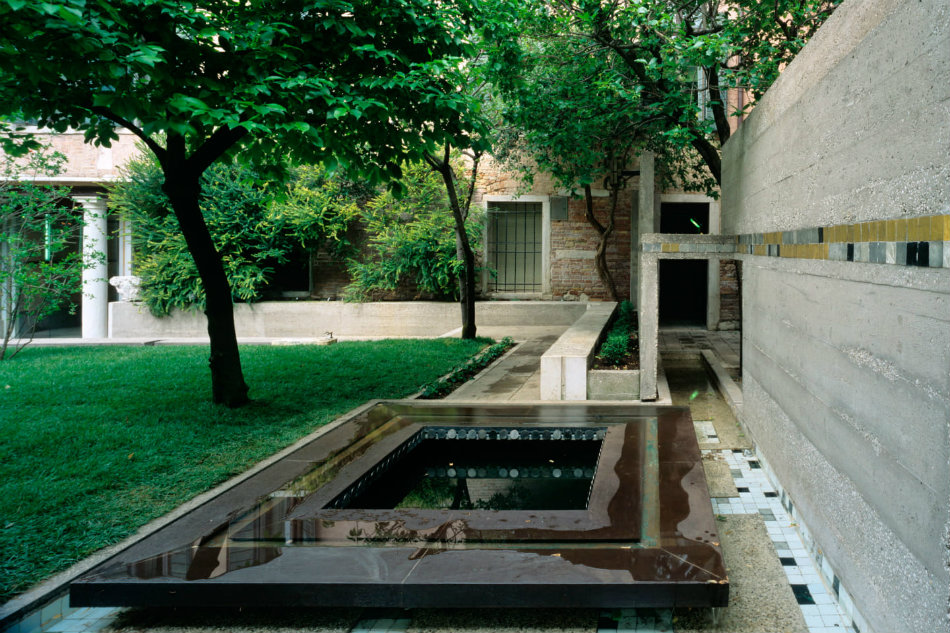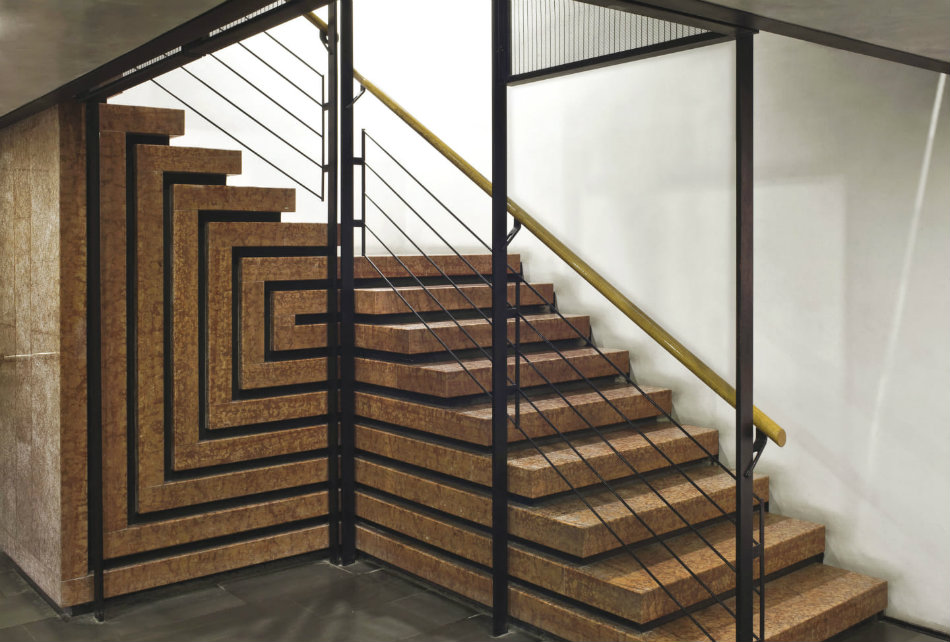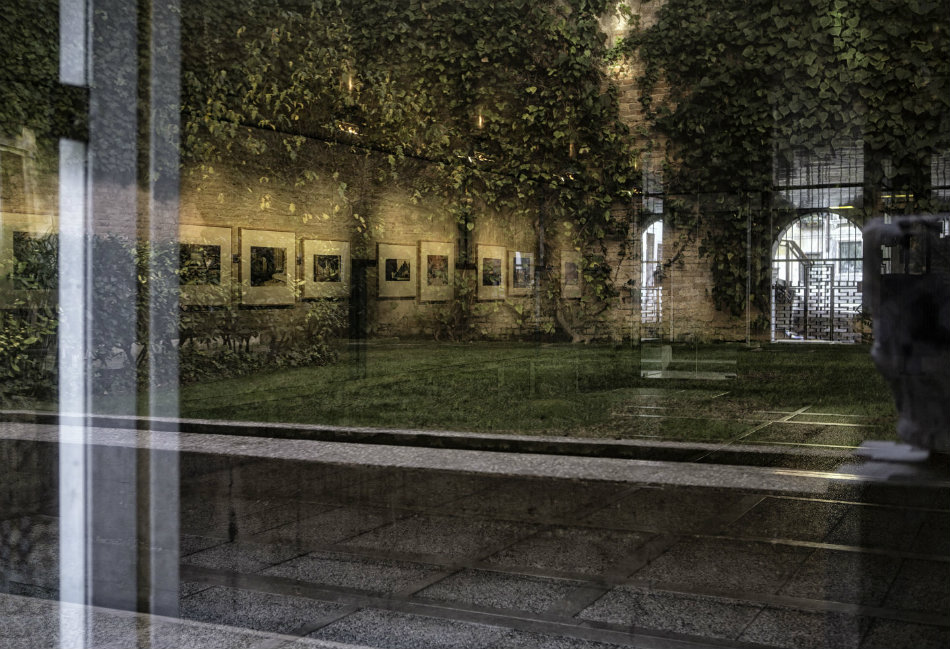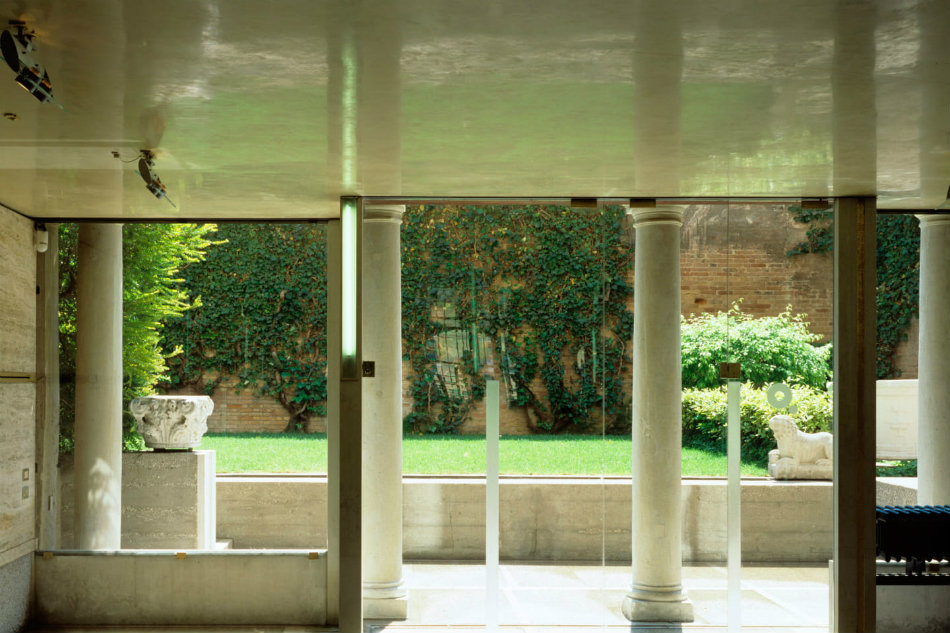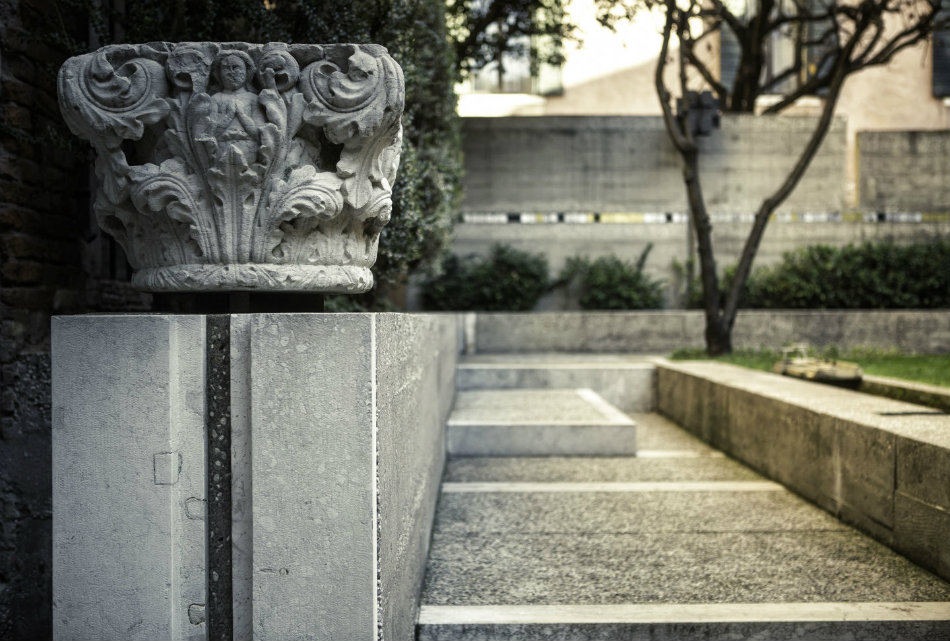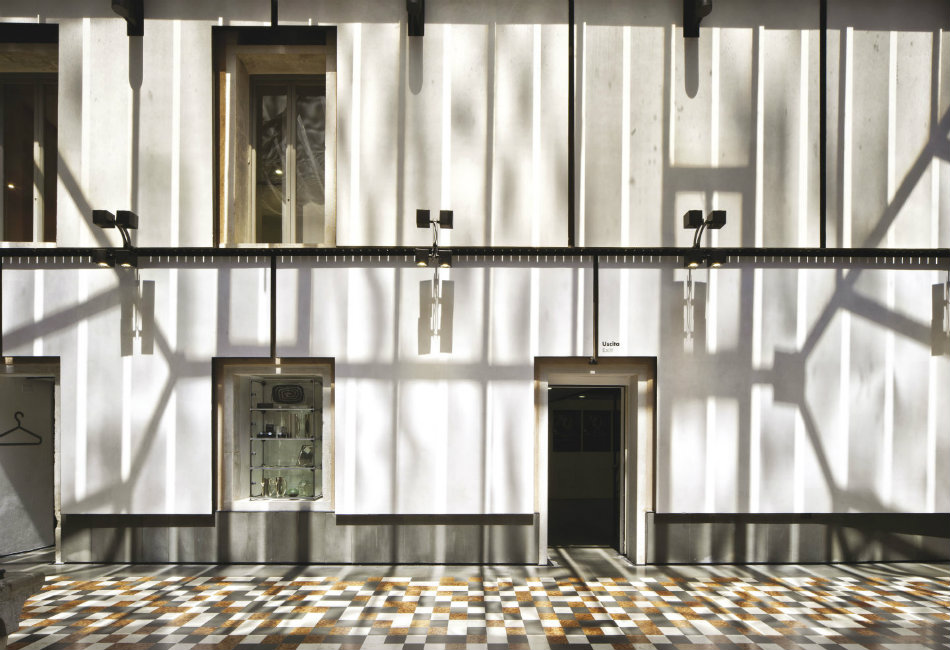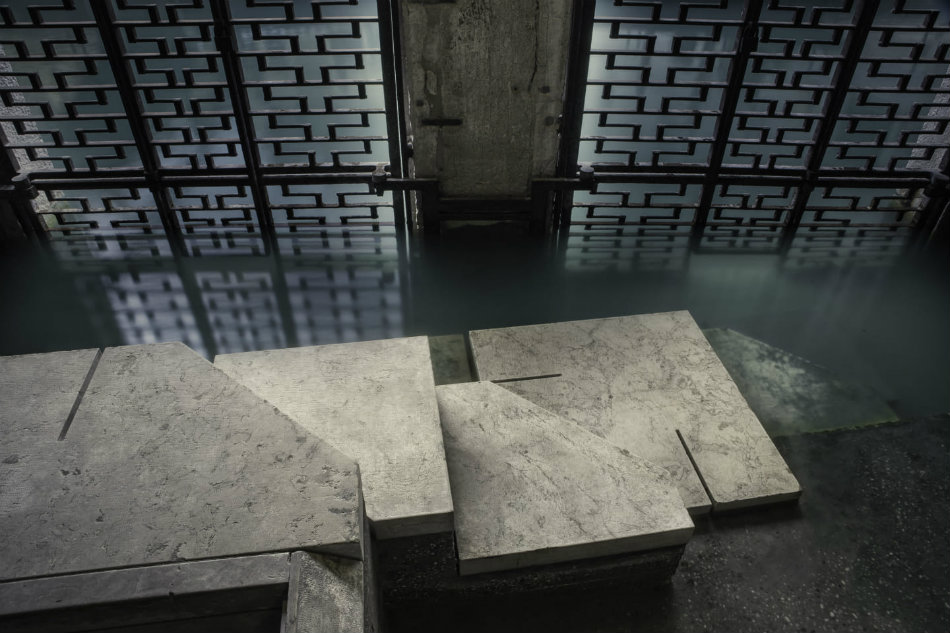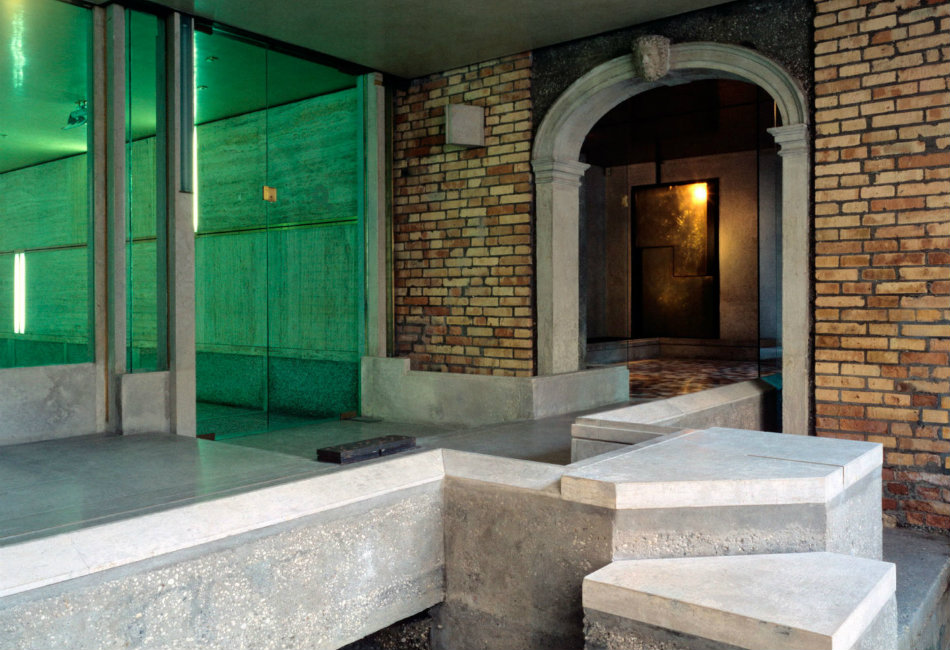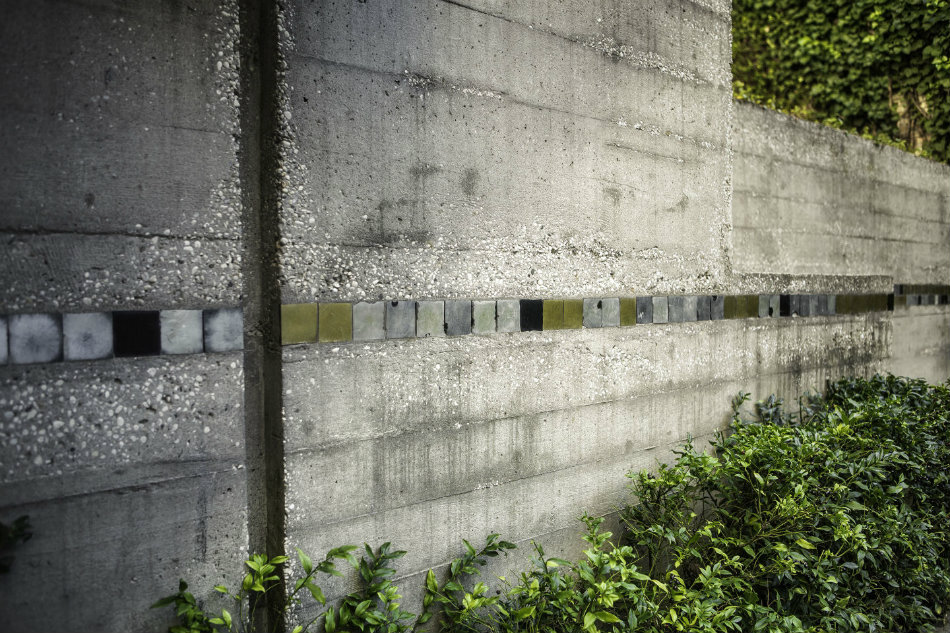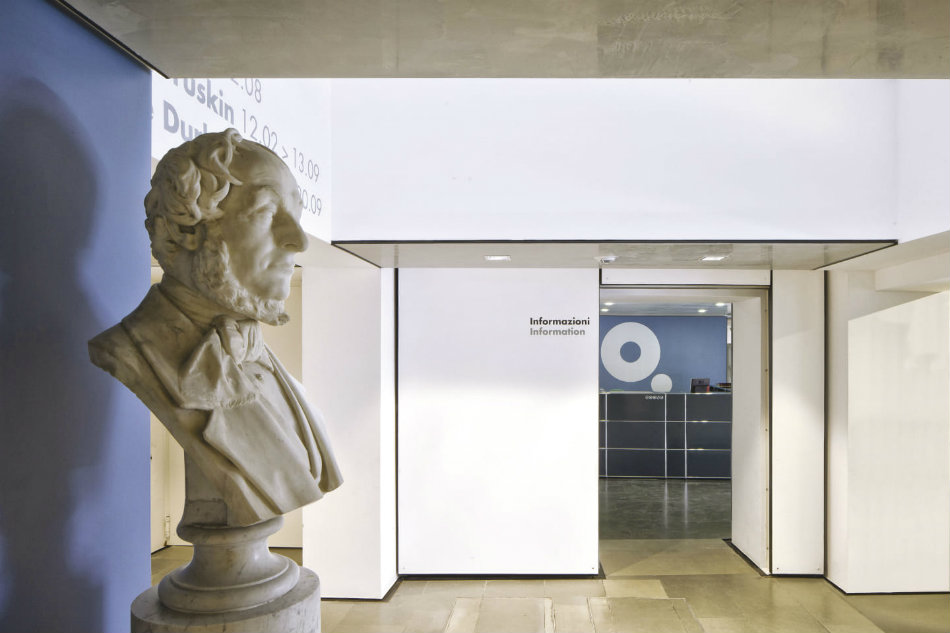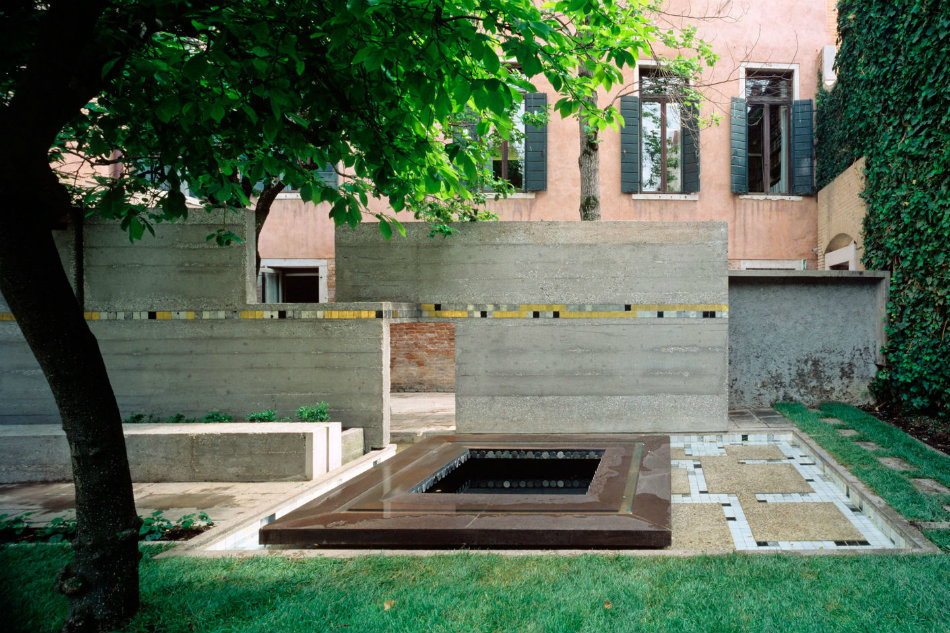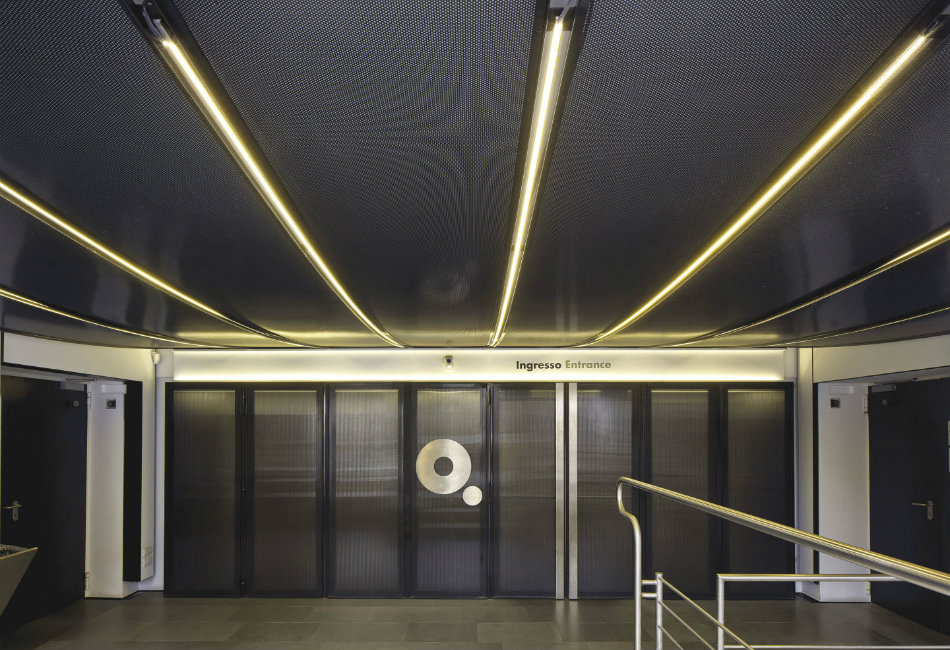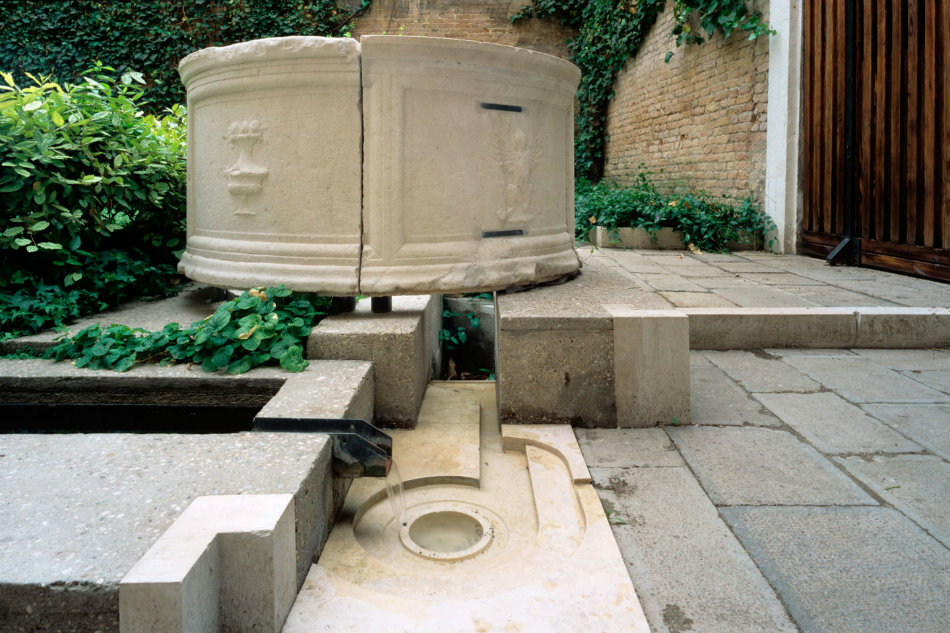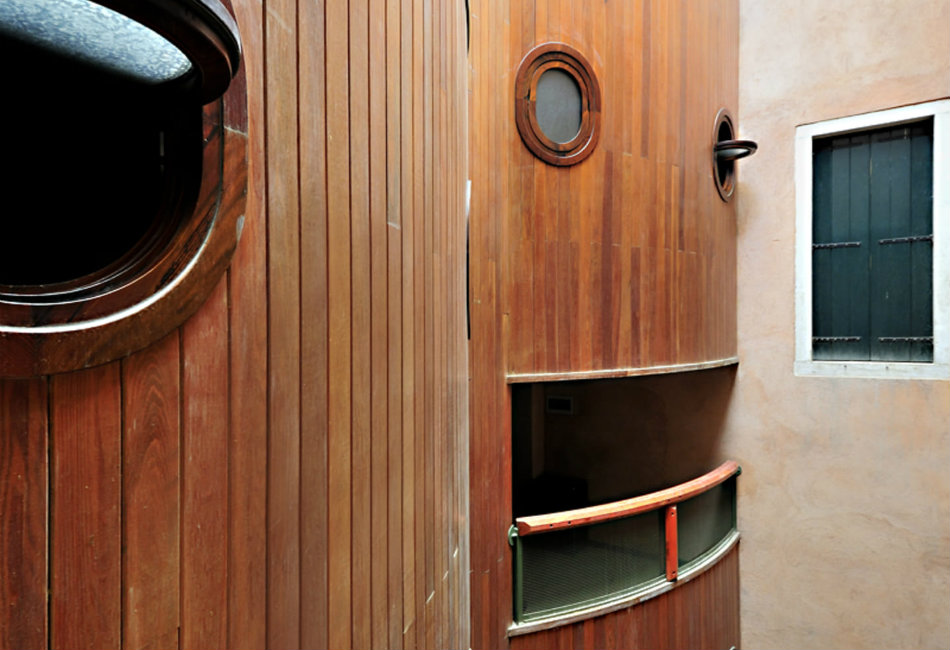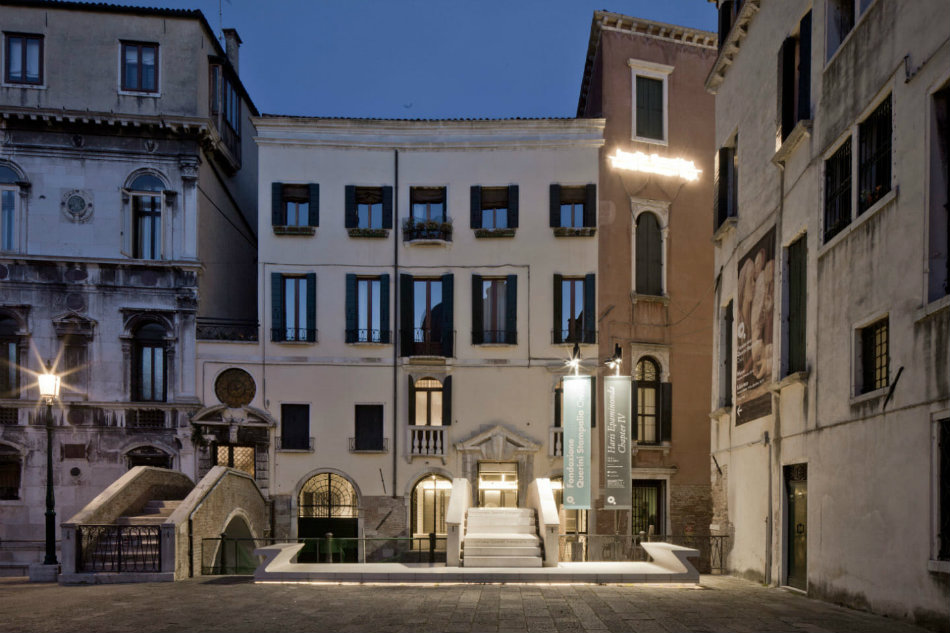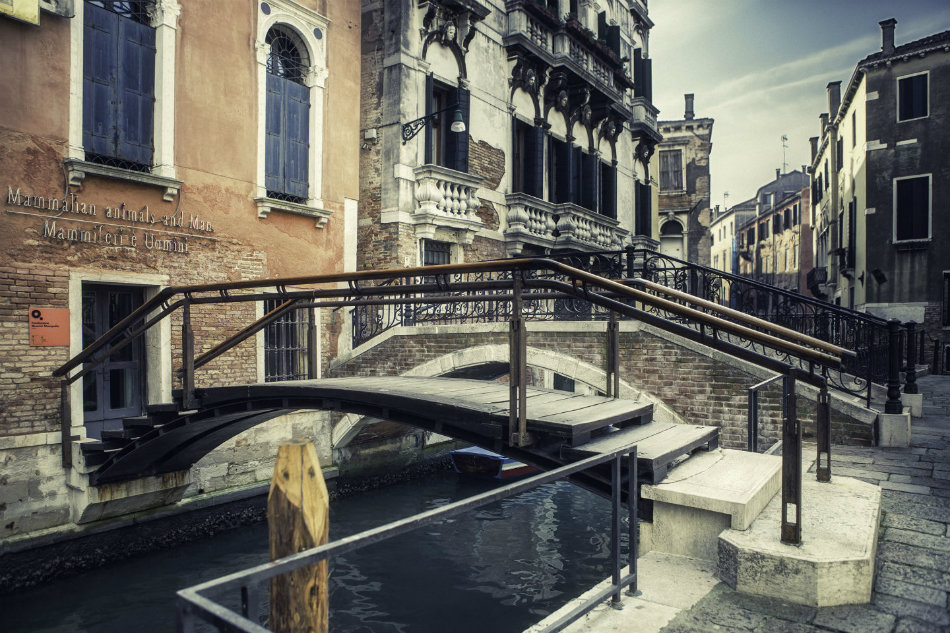In 1963 the precious work led by Carlo Scarpa took place, considered the perfect example of the “most cultured and aristocratic twentieth-century Italian architecture” yet it only involved the original entrance and one of the inner courtyards of the palace: a jewel of architecture and poetry, embedded in a prestigious - dramatically decayed - complex. Scarpa restored the ground floor of the sixteenth-century palace Querini Stampalia, as required by the president of the Foundation Gino Luzzatto and by the director Giuseppe Mazzariol for whom he worked from 1959 to 1963, while back in 1949 the former director Manlio Dazzi asked him to work on the entrance and garden. The restructuring of the previous nineteenth century set design, in a vaguely neoclassical style, was based on a careful combination of new and old elements, and on a great skill in using materials dear to the Venetian vernacular, involving refined contrasts and subtle nuances.
This architectural restoration is made up of four parts: the bridge, which is the lightest and fastest junction arch made in Venice over the past few centuries, the entrance with the barriers for the defence from high waters, the portego (arcade) and the garden.
Here Carlo Scarpa turned a typical Venetian courtyard into a delightful hortus conclusus, reinterpreting Arabic and Japanese traditions. The centre hosts a geometric lawn with a cherry tree, a magnolia and a pomegranate. They are surrounded by climbing plants and flower shrubs which accompany an ancient wellhead, a Gothic lion, some capitals and two fountains. While he was in charge of the Foundation, Giuseppe Mazzariol took good care of its fate by listening to the advice of doctor Antonio Hoffer, who was very keen on botany.
The original structure changed over the following two decades, restoration became necessary and was ended in the spring of 1993 by architect Mariapia Cunico. By remaking the lawn, performing drainage, implementing an irrigation system and adding some plants, this magical spot in the heart of Venice was brought back to its original splendour.
In the 1980’s, led by Valeriano Pastor, work started to rearrange functions and services, the accommodation of specific architectural elements, and not least, major installations. A collaborator of Carlo Scarpa’s in the 1950’s, Mr Pastor was in charge of an articulated programme of expansion and renovation which stemmed from the hypothesis of a new distribution of services and reached the third and fourth floor, where administrative offices were placed.
The most evident sign of this work is the system of vertical connection, built from scratch on the site of a minor nineteenth-century staircase, which includes, apart from the metal stairs with artificial precast stone steps, also smaller spaces (bathrooms, fumoirs, deposits) which overlook a cortesella (small courtyard) of the palace with convex protruding volumes, covered with wooden slats, punctured by small portholes which remind of nautical figures. Previously Mr Pastor had also designed a connecting walkway between the library and the new library deposit, as well as a metal and wooden door in the garden, which relates to the other door, by Mr Scarpa.
Lastly, the third phase of the architectural and functional recovery. The work made by Mario Botta, who was assisted from the very start by the then very young Mario Gemin, has defined a profound renewal of the headquarters of the Querini Stampalia Foundation and started with the purchasing, in the late 1980’s, of some properties near the historic building, including the essential seventeenth-century bridge on campo Santa Maria Formosa, which was a new strategic access to the Foundation complex, which had always been constrained by cramped entrances.
This enlargement concerned the whole reorganization of the building: the project aimed to meet its functional needs, starting from the initial architectural structure. The architect from Ticino worked with philological precision, recollecting some irregular sections to achieve spatial continuity and a new reorganization of the various functional areas, so as to make them immediately recognizable. He continued to work on the new wing alongside the restoration works carried on by Carlo Scarpa. The references to essential lines are clear and intentional like the matches and the contrasts of materials and colours: stone and metal, white and black, grey and red. The project started in late 1993, when President Egle Renata Trincanato and Director Giorgio Busetto of the Fondazione Querini Stampalia asked for Mario Botta’s intervention in the restoration of the palace, which was supervised at that time by the Water Magistrate of Venice. The new project was commissioned to Botta.
